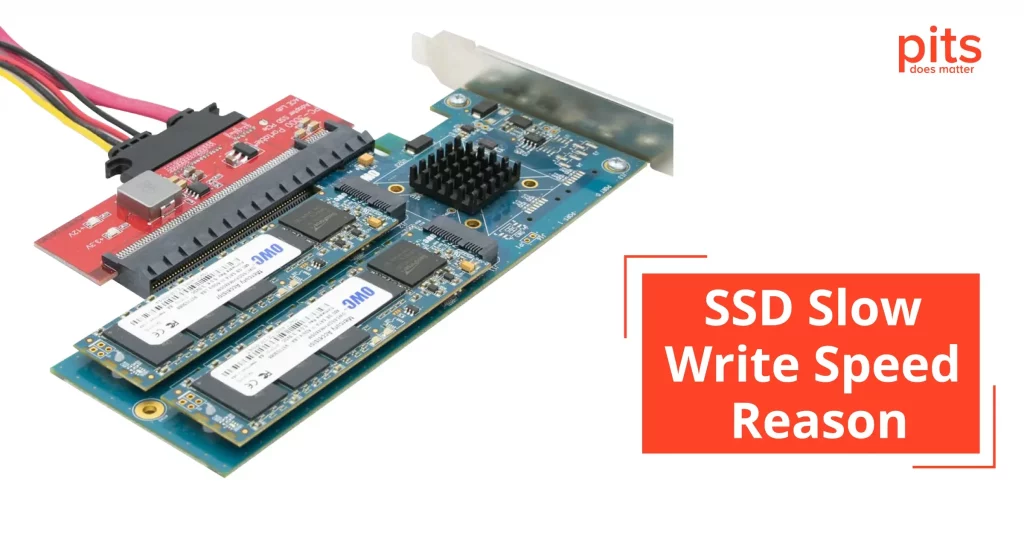Solid State Drives (SSDs) are celebrated for their fast read and write speeds compared to traditional Hard Disk Drives (HDDs). However, many users experience slow write speeds with their SSDs, leading to frustration and decreased productivity. Understanding the reasons behind these performance issues is essential for diagnosing and resolving the problem. In this blog post, we will explore the common causes of slow write speeds in SSDs and provide tips to enhance performance.
Common Reasons for Slow Write Speeds in SSDs
- Insufficient Free Space
One of the primary reasons for slow write speeds on an SSD is a lack of available storage space. SSDs use a process called wear leveling to distribute data evenly across the drive. When an SSD approaches its maximum capacity, the controller has to work harder to find free space for new data, leading to slower write speeds.
Solution: Aim to keep at least 10-20% of your SSD’s capacity free to ensure optimal performance. Regularly review and delete unnecessary files, or consider upgrading to a larger capacity SSD.
- Fragmentation
Unlike HDDs, SSDs are not significantly affected by fragmentation, but certain operating systems can still cause files to become fragmented across the drive, particularly with older versions of Windows. This fragmentation can result in slower write speeds as the SSD controller struggles to organize data efficiently.
Solution: While SSDs are designed to handle fragmentation better, using TRIM commands can help maintain performance. Ensure that TRIM is enabled on your operating system. Most modern operating systems automatically enable TRIM for SSDs.
- Old Firmware
Outdated firmware can hinder the performance of your SSD. Manufacturers regularly release firmware updates that improve performance, stability, and compatibility. If your SSD’s firmware is outdated, you may experience slower write speeds and other issues.
Solution: Check the manufacturer’s website for firmware updates for your SSD. Follow their instructions for downloading and installing the latest version to ensure your drive is running optimally.
- Thermal Throttling
SSDs can become significantly slower if they overheat. High temperatures can cause thermal throttling, where the SSD reduces its speed to prevent damage. This is particularly common in systems without adequate cooling, during heavy workloads, or if the SSD is housed in a cramped space.
Solution: Monitor the temperature of your SSD using monitoring software. Ensure that your computer has adequate cooling, and consider relocating the SSD to a better-ventilated area or installing additional cooling solutions if necessary.
- Background Processes
Running multiple applications or background processes can consume system resources and slow down SSD write speeds. For example, antivirus scans, system updates, or file indexing can use disk I/O operations, impacting performance.
Solution: Monitor your system’s resource usage through the Task Manager (Windows) or Activity Monitor (macOS) and close unnecessary applications or processes that might be consuming I/O resources while you’re trying to perform write operations.
- Low-Quality or Incompatible SSDs
Not all SSDs are created equal. Lower-quality SSDs, especially those using slower NAND flash memory types, may inherently have slower write speeds. Additionally, compatibility issues between the SSD and the motherboard or operating system can also affect performance.
Solution: Research and invest in high-quality SSDs from reputable manufacturers. If you suspect compatibility issues, consult the motherboard documentation or manufacturer to ensure your SSD is supported.
- File System Type
The file system used on the SSD can also impact write speeds. For instance, NTFS is commonly used on Windows systems and supports features like compression and encryption, which can slow down write operations. In contrast, exFAT or APFS (for macOS) may offer better performance for specific use cases.
Solution: If performance is critical, consider formatting the SSD with a file system optimized for your usage scenario. Ensure to back up any data before formatting, as this will erase all contents on the drive.
Conclusion
Slow write speeds on an SSD can be attributed to various factors, from insufficient free space and outdated firmware to thermal throttling and background processes. By understanding these potential causes and implementing the suggested solutions, you can enhance the performance of your SSD and ensure that it operates at optimal speeds.
If you continue to experience issues with your SSD despite trying these fixes, it may be time to consult with a professional or consider data recovery services if you suspect data loss. Regular maintenance, monitoring, and awareness of your SSD’s health are key to ensuring a fast and reliable computing experience.


